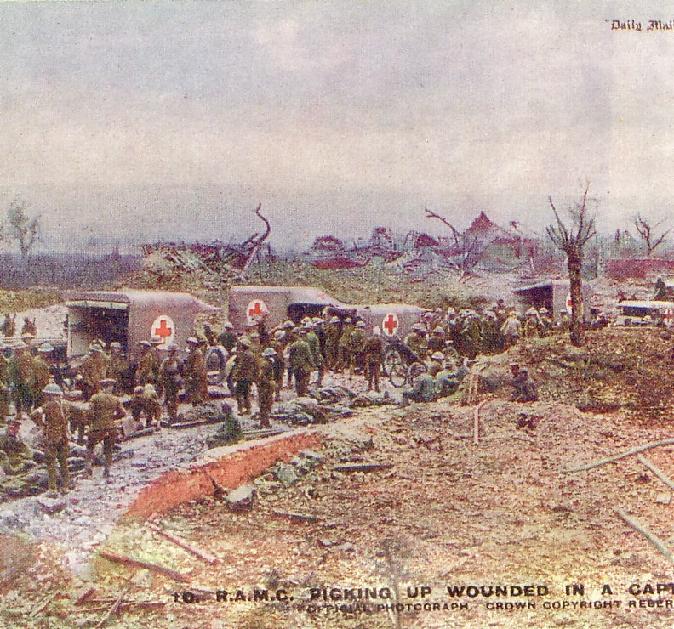Collecting Casualties
This photograph and caption appeared in
the Daily Mail Weekend magazine in 2007

A fleet of military ambulances picking up wounded men from a
ruined French village recently captured from the Germans - probably during
the Battle of the Somme in 1916. World War I was the first conflict in
history in which deaths from wounds outnumbered deaths by disease - thanks
to improved hygiene (the trenches were lice-infested but `resting' soldiers
had their uniforms deloused in giant steam laundries), as well as medical
advances. Most wounds were caused by shell splinters, followed by bullets;
the much-feared poison gas (chlorine, phosgene and mustard) killed only
three per cent. All soldiers carried first aid kits, and the seriously
wounded were carried from the battlefield by stretcherbearers (often
Quakers who refused to bear arms). Many survived their initial wounds, only
to die later from `gas gangrene - post-wound infections. Casualties were
treated at field-dressing stations just behind the lines: further back,
military hospitals were staffed by women volunteer nurses - or VADS - the
nearest women were allowed to the front.
The luckiest casualties were those suffering `a Blighty one'
- a survivable wound serious enough to warrant evacuation home by train and
hospital ship. World War I was the first war in which combat stress - then
called `shell shock' - was recognised as a genuine condition, though some
still called it `malingering'. |